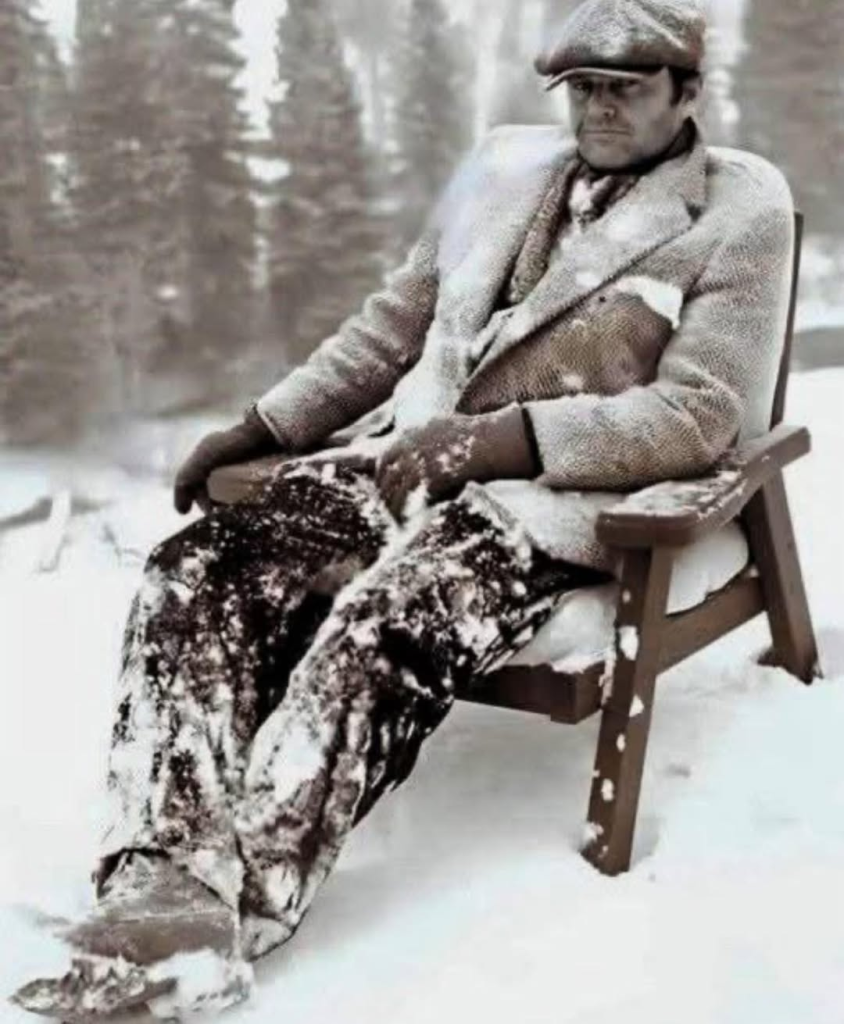Stanley Kubrick’s The Shining endures as one of horror’s most haunting, atmospheric pieces. But behind the camera, the intensity that you feel on-screen had deep, often unseen roots—and none was more caught in that furnace of creativity than Jack Nicholson, playing Jack Torrance.
The setting: an illusion built to unsettle
Though the Overlook Hotel seems covered in snow and isolation, a large portion of the film was shot within the walls of Elstree Studios in England. Kubrick, ever the perfectionist, oversaw every detail: the lighting, the décor, the angles, the temperature—even the way certain hallways made you feel slightly off-balance. The studio was transformed into a vast, eerie labyrinth. For Nicholson, this meant long hours surrounded by a constructed world—cold surfaces, empty corridors, fabricated snow, and that omnipresent sense that you are somewhere you shouldn’t be.
Diving into the role: obsession, transformation, and scars
Nicholson didn’t just play Jack Torrance. He inhabited him. Kubrick pushed actors hard; takes were repeated again and again, sometimes dozens of times, until something quasi-transcendent was captured. For Nicholson, this meant pushing past fatigue, frustration, and sometimes resentment. He was expected to conjure moments of rage and unhinged energy repeatedly, on command—and then turn it off, reset, and do it again.

Between takes, he’d occasionally break character, crack a joke, lighten the mood. But these moments were few and far between, glimmers in what was otherwise a rigorous environment. Many around him noted that even off-camera, Nicholson was often still in the edges of Torrance—his voice, his posture, the darkness in his eyes—never completely stepping away.
The “Here’s Johnny!” scene: more than a punchline
This is probably the most iconic moment of the film, and rightly so. Nicholson, wielding an axe, hack through a door. The energy required wasn’t just physical; it demanded raw abandon. The intensity of that take came not just from direction, but Nicholson’s visceral commitment. Reportedly, he brought more force—and perhaps more madness—to the character than the script alone could contain.
It’s said that the tension among cast and crew during the filming of that door-scene was palpable. Kubrick was exacting: he wanted every splinter, every grimace to register. Nicholson, in turn, poured himself into it—maybe more than was comfortable, maybe further than many had seen before.
Psychological cost and the thin line between actor and character
Long hours. Frozen sets. Repetition. The pressure to give a performance that would be remembered. The film’s atmosphere was unsettling on purpose, and those making the film were not immune to its weight. As shoots dragged on, as takes piled up, the emotional fatigue mounted. For Nicholson, this meant that Jack Torrance wasn’t just an alter ego on set—it became a presence that was with him even in quieter moments.
Some people working nearby remembered Nicholson slipping into silence, staring off-camera in ways that suggested he was still inside the Overlook. Others recalled him cracking jokes to relieve tension, then slipping back into something darker as soon as the lights went up again.
The legacy: an unforgettable performance, shaped by all that went behind
By the time the film wrapped, Nicholson’s version of Jack Torrance was no longer just writing on a page. It had become a psychological journey—one that blurred the lines between performance and lived experience. His eyes, his unsteady voice, his manic energy—every moment of instability added to what we now see as cinematic genius.
The result is a performance that still sends shivers decades later. It’s not just because of the horror in the script, or Kubrick’s visual mastery—but because Nicholson apparently carried parts of Jack Torrance off set, bringing character and actor into uneasy overlap. It’s what helps The Shining remain more than a film—it’s a haunting.